The first obstacle, however, is deciding which instrument you want to learn. Perhaps you already have a favorite band or musician who has inspired you, or a friend who already plays a musical instrument. But before making a purchase, consider the practical side of learning an instrument. You can find someone to teach you or take lessons at a music school or conservatory. Alternatively, you can dedicate some time to self-teaching and try learning on your own by watching tutorials on platforms like YouTube, where you can find abundant material for beginners.
It’s usually easier to start with a popular instrument; most music schools teach piano, wind, and string instruments (while among private teachers, the most popular are usually piano and guitar). If you want to play in a specific orchestra, think about which instruments are needed more frequently.
Nevertheless, the most important thing is to enjoy your instrument, so don’t choose the trombone if you want to play solos like Jimmy Hendrix!
This Music Guide is divided into various sections – you can navigate to each one using the table of contents on the left side of each page.
The Acoustic Guitar
The acoustic guitar is by far the most popular instrument for beginners and for anyone who wants to enter the magical world of music. It is affordable, easy to transport, quiet enough not to disturb others during practice, relatively easy to produce a nice sound, and doesn’t require any additional devices like an amplifier. It can also be considered a more “serious” and modern instrument for learning if a child later wants to play the electric guitar, as skills and techniques can be transferred. The acoustic guitar is considered the “social” guitar, as it allows us to quickly and easily play chords to accompany songs.
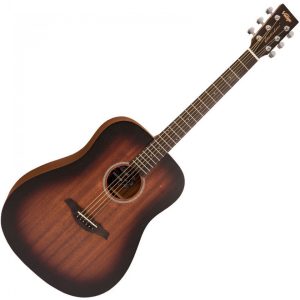
One subcategory is the Electro-Acoustic Guitar, which is an Acoustic Guitar with the ability to connect to an amplifier or console to enhance the instrument’s volume or even to a sound card if you wish to record via a computer. There are many accessories for each guitarist according to their needs (capo, footrest, metronome, strings, picks, etc.). A guitar case or, even better, a guitar case, is essential to protect your instrument from humidity, cold, or excessive heat, as well as a tuner to easily tune it.
The Classical Guitar
The classical guitar, being an elegant musical instrument, is distinguished for its wonderful aesthetics and the unique atmosphere it creates. It is an instrument that appeals to those who wish to explore the world of classical music with a distinct and elegant approach. The classical guitar is characterized by the use of nylon strings, which provide a warm and soft sound. Players demonstrate techniques such as fingerstyle, picking, and trilling, offering a unique style that combines experimental expressiveness with the aesthetics of classical music.
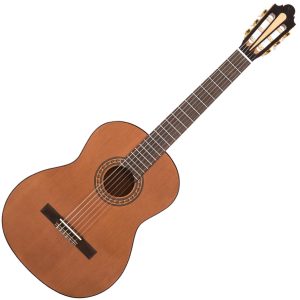
Classical guitar performances include works by great composers such as Bach, Beethoven, and Villa-Lobos. These musical pieces offer an excellent platform for the development of the player’s technique and expressiveness. An additional advantage of the classical guitar is its affordability. The classical guitar is considered better for beginners, as it uses nylon strings, which are much easier to play than metal strings—with lighter string tension, it is much easier to press the string down on the fretboard to produce a note. It is an instrument suitable for beginners, encouraging learning at a steady pace and ensuring an enjoyable journey into the world of music.
The Electric Guitar
Like the acoustic guitar, the electric guitar is also very popular and has recently seen a resurgence in interest due to the widespread popularity of bands based on the electric sound. In the past, guitar teachers considered it important to acquire good technique on a classical guitar before playing an electric one. However, opinions have changed, and as long as you receive proper education, an electric guitar is just as good an instrument for beginners. The strings of the electric guitar are very thin, light, and closer to the fretboard than those of an acoustic guitar, making it much easier to play.
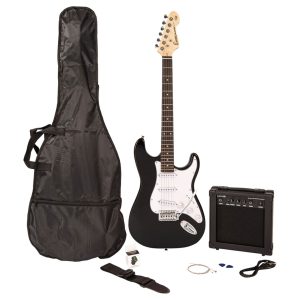
As electric guitars don’t have a hollow body to amplify the sound, they use pickups under the strings that require external amplification. Therefore, you will also need a guitar amplifier and an instrument cable to connect it. Electric guitars are generally played with a pick, so you’ll also need a guitar strap, and it’s recommended to have a guitar pedal or a multi-effects pedalboard to provide different sound options, such as distortion, depth, tremolo, etc.
You can either buy all the elements separately or choose a complete electric guitar set that includes the electric guitar amplifier, cable, strap, and often a learning book for beginners. Electric guitar sets are ideal for parents who are unsure about how to start their child in learning the instrument, as all electric guitar sets are designed for beginners and simplify the purchasing process. Don’t forget to protect your investment with a guitar case or, even better, a guitar case, to shield your instrument from humidity, cold, or excessive heat. Also, consider getting a guitar stand, making your instrument readily accessible and encouraging more frequent practice! As with any stringed musical instrument, don’t forget the set of strings, as they are considered consumables!
The Piano
The piano is the instrument where composers and orchestrators usually write music since it encompasses harmony, melody, and rhythm, unlike instruments such as strings or wind instruments. It allows you to learn general musical skills applicable to all genres of music, and it is often required as a second instrument in higher education. Additionally, the music available for the piano covers a wide repertoire from classical and jazz to contemporary pop music, making it appealing to people of all ages. There are two basic types of pianos: the classical piano and the digital piano. Both have their own unique features:
The classical piano, when a key is pressed, moves a hammer that strikes the strings to produce sound. It is the best choice for serious piano performance, as finger training and strengthening are essential if you want to advance to higher levels of study. When looking to buy a classical upright piano, consider the size and weight of the instrument and where you will place it in your home, especially if you live in an apartment on the 10th floor! Classical pianos are made of natural materials sensitive to temperature changes and require professional tuning and care regularly, especially if the instrument is played daily, which means additional maintenance costs. Another significant disadvantage is the sound; practicing on a classical acoustic piano should be done at specific times of the day without disturbing those around you since there is no effective way to silence the sound.
If cost and noise are issues, then a digital piano is the best option. Although there are now very affordable models on the market, it is generally true that the more you spend, the better the sound quality and the more realistic the feel of the keyboard. In general, in a digital piano, the better the simulation in both sound and keyboard feel compared to a classical piano, the better and consequently more expensive it is.
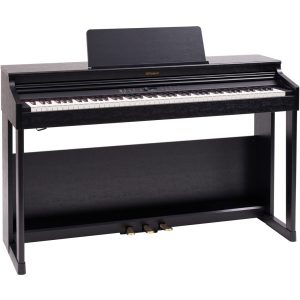
Many times, available space is also a purchasing criterion that can be satisfied with a Stage Piano. The Stage Piano series offers everything that an Electric Piano does but in more convenient dimensions and less weight since it lacks the wooden base and wooden finish, making it easier to transport. This category might be the ideal choice as their prices are usually very affordable, providing realistic piano sounds and a weighted keyboard with 88 full-size piano keys, suitable for a beginner taking their first steps.
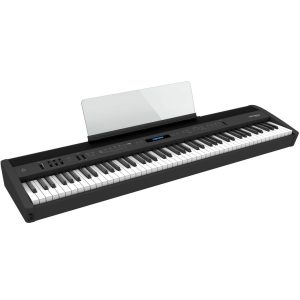
The major advantage is that the piano sound is created digitally, allowing for adjustable volume, or you can completely mute the sound using headphones, making quiet practice possible at any time of the day. Digital pianos usually feature a variety of other instrument sounds, such as electric piano, harpsichord, violins, and organ, along with effects like reverb, chorus, and delay, making practice more creative. Additionally, they can be used with music software on a computer if they have USB or MIDI ports. Imagine playing a piece while the computer records it and simultaneously writes the sheet music with the notes you play on the digital piano. For someone taking their first steps in learning the piano, a good digital piano is the ideal choice to start with, as it offers all the above features at an affordable price.
The Organ
If you have a limited budget or simply want to learn more for enjoyment rather than serious education, then an organ might be a good idea. Organs come in various lengths and sizes of keyboards and include a wide variety of digital sounds and rhythms stored in their memory. They usually have built-in speakers and can also operate on batteries. We can categorize them into two basic types: those with a simple keyboard and those with dynamic piano keys. Dynamic keys provide the organ with a significant capability, where the greater the pressure applied to a key, the higher the intensity of the note, similar to what happens in a classical piano. This feature is crucial because, with an organ featuring dynamic piano keys, a young child can take the first steps in playing the piano.
Compared to digital pianos, these keyboards fully exploit digital technology, providing automatic accompaniment features that allow beginners to quickly play musical pieces with rhythmic accompaniment using the left hand, while the right hand plays the melody. Organs are often chosen to provide introductory musical education to young beginner students, as the immediate results can be combined with basic teaching and serve as an introduction to the piano when it feels like the child has reached a sufficiently good level. If progress towards the piano is something you’re considering, then you should look for an organ with at least the following features:
- 5 octaves (61 full-size keys, black and white)
- Dynamic keys with piano keyboard sensitivity
- Sustain pedal input
- Good quality basic piano sound
- USB or MIDI connections to the computer
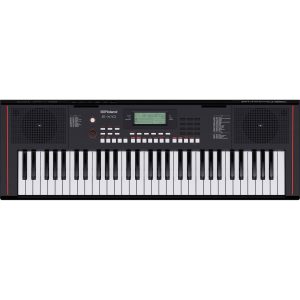
If you’re buying for a very young child, the cost is quite low for a simple organ, allowing you to initially explore how they fare, and then invest in a better model when their hands and fingers are stronger and fully developed.
The violin
The violin is simultaneously a solo and orchestral instrument, making it an ideal choice for a child who wants to join the school orchestra and play with other musicians. Practice and performance in groups help in the faster learning of an instrument, as more advanced students will assist in your progress. Although there are prominent players in jazz and traditional music, the majority of music written for the violin comes from the classical repertoire, and this should be taken into account when encouraging a child to start their first instrument, as they usually practice more when they enjoy the music they play! It is considered one of the most challenging instruments due to the required skills in tuning and intonation, and learning can be discouraging, as well as uncomfortable for those who listen – patience and daily practice are the keys to learning!
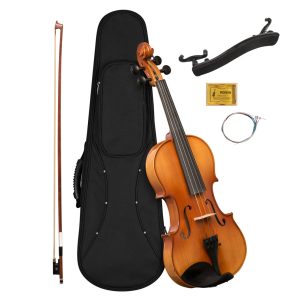
Violins are available in smaller sizes for young students:
- 1/16 violin, approx. 380 mm, 3-5 years old
- 1/8 violin, approx. 425 mm, 4-6 years old
- 1/4 violin, approx. 460 mm, 5-7 years old
- 1/2 violin, approx. 520 mm, 6-8 years old
- 3/4 violin, approx. 560 mm, 7-10 years old
4/4 violin, approx. 590 mm, 10 years and above
- *The determination of the appropriate size also depends on the child’s physical development.
The size of the violin is very important – a violin that is too large can be uncomfortable to hold, and in the worst cases, it can cause muscle problems. For the most comfortable grip, it is recommended that the violin bridge be the right size to avoid strain on the hand. The standard size for a violin is 4/4 (or 1/1), and it ranges down to 1/16.
The recorder
The recorder is both very popular and particularly suitable for beginners. It has been used in schools from primary education for over 100 years, partly due to its very low cost and because it helps in learning music reading and training the ear to recognize intensity and harmony. Unlike other wind instruments, a reasonable tone can be produced without much difficulty, as you simply need to blow instead of learning the complex techniques of other wind or brass instruments. Recorders are available in various sizes – sopranino, soprano, descant (the most common), alto, tenor, and bass, and they make good instruments for group music and for teachers who want to promote collective music creation.
A simple plastic recorder costs about €10 and is an ideal starting point for a beginner. Also, for very young children, there are plastic recorders that can withstand impacts that a wooden instrument may not endure. Since plastic does not sound as good, some recorders are made entirely of wood, providing a more quality, warm, and full sound. Wooden recorders are made from a variety of woods such as maple and pear to very hard woods like ebony.
Recorders are offered in two different fingerings: German and Baroque. For beginners, the German fingering is the simplest, where all fingers cover the holes, and lifting each finger one by one allows playing a C or F scale. However, for more complex chromatic music, Baroque fingering is better.

The flute
The flute is one of the most beloved and popular musical instruments in the category of wind instruments. With its beautiful, crystalline sound, the flute has impressed listeners and enthusiastic musicians worldwide. Usually made of precious metals such as nickel or silver, the flute has an impressive external appearance and is easy to hold. The typical design of the flute contributes to the reproduction of its unique sound.
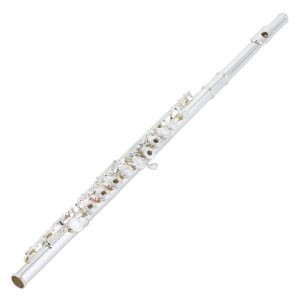
Playing the flute requires special techniques of breathing, sound production, and finger placement. It is an instrument designed for people seeking a musical challenge and wishing to express a wide variety of musical emotions. The sound of the flute is recognizable and can cover a broad range of musical styles, from classical to contemporary and jazz. Playing it requires skill and dedication, and musicians who choose it experience an exciting musical journey.
Maintenance and cleaning of all wind instruments are essential processes for both the proper functioning of the instrument and the hygiene of the person using them. For this reason, there are specific cleaning and maintenance kits available to keep your musical instrument always clean and in optimal playing condition.
The saxophone
The saxophone is an amazing instrument belonging to the family of wind instruments. Its uniqueness lies in producing sound using a reed, despite being constructed from metal. Invented by Adolphe Sax in 1840, the saxophone has since gained the love and respect of both classical and jazz musicians.
The saxophone family includes various types, but the two most popular among beginners are the Alto Saxophone and the Tenor Saxophone. The alto saxophone produces a brighter and higher sound, while the tenor saxophone produces a lower and deeper sound. Additionally, there are other members of the saxophone family such as the soprano, baritone, and others, each with unique sonic characteristics.
The saxophone plays a prominent role in jazz music but has also successfully integrated into classical, rock, and many other genres. Its sound can be expressive and versatile, covering a wide range of emotions and styles. It is an instrument that opens doors to the world of music in its own unique way.
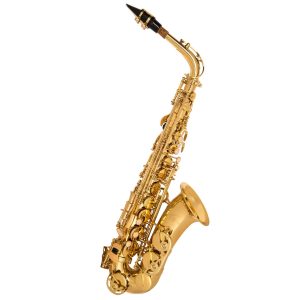
The clarinet
The clarinet belongs to the woodwind family and is an exceptionally versatile instrument with a long history and widespread use in various musical genres. Despite often being considered one of the more conservative instruments, the clarinet is capable of producing rich and varied sounds, making it suitable for classical music, jazz, and much more.
There are various types of clarinets, but the Bb soprano clarinet is the most common, often the first instrument beginners learn. There are two main fingering systems, the German (Oehler) and the French (Boehm), which differ in the arrangement and number of their keys and holes. The more affordable and durable versions are usually made from synthetic wood such as ebonite, while the more expensive ones are crafted from hard woods like ebony.
The clarinet is an instrument that expresses emotions of melancholy, romance, and joy, depending on the player’s technique. Its flexibility makes it ideal for musicians looking to explore new musical expressions and participate in various musical ensembles.
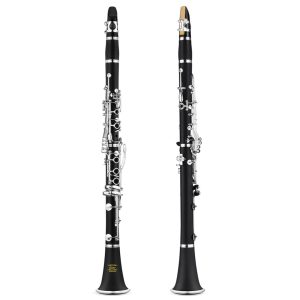
The maintenance and cleaning of all wind musical instruments are essential processes for both the proper functioning of the instrument and the hygiene of the person using them. For this reason, there are specialized cleaning and maintenance kits to keep your musical instrument always clean and in optimal playing condition.
The traditional clarinet
The traditional clarinet is one of the emblematic instruments in many parts of the world, especially in the traditional music of Greece. The clarinet, in this form, is known for its warm, distinctive sound that adds a unique flavor to every musical tradition.
In the realm of traditional music, the traditional clarinet is used in many cultures to interpret folk, traditional, and national pieces. Although the characteristics of the clarinet usually remain unchanged, variations in playing style, technique, and construction give each region a unique and authentic sonic fingerprint. The traditional clarinet has 15 keys with a simple German System fingering (also known as Albert Style – Muller – Simple System) in the key of Bb (B flat) or A (A) and a single C (C) at the bottom.
The traditions that shape the sound of the traditional clarinet cover a wide range of emotions and expressions. From the fast and cheerful performances at festivals to the emotional, melancholic pieces that narrate stories and traditions, the traditional clarinet is a key to cultural heritage and diversity, not only in Greek but also in global music.
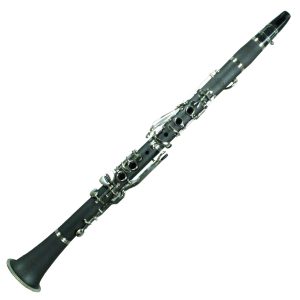
The bouzouki
The bouzouki is one of the most characteristic instruments in Greek music and is often associated with rebetiko and folk Greek songs. The construction of the bouzouki plays a significant role in the sound and style it offers. Bouzoukis are usually made from woods such as mahogany, spruce, and walnut, which impart different characteristics to the sound. Luthiers carefully select materials to give the bouzouki the desired harmonics and its characteristic sound. Like any wooden musical instrument, it requires special care and protection from temperature fluctuations and humidity levels, and for this reason, using a bouzouki case or, even better, a bouzouki case is always recommended for the complete protection of the instrument and safer transportation.
There are two main types of bouzouki: the eight-string bouzouki and the six-string bouzouki. The eight-string bouzouki is the most common and has 8 strings for faster and more soloistic playing, while the six-string bouzouki has 6 strings played in pairs. Each version offers a unique sonic character, with the six-string bouzouki always holding a special place in the authentic rebetiko music tradition, while the choice between them depends on the musician’s personal preference.
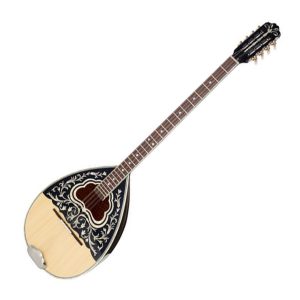
The bouzouki has a close relationship with rebetiko music, a genre that developed in the suburbs and ports of Greece during the 1920s. Rebetiko songs express the life of the working class, with themes ranging from love and passion to the struggles and problems of everyday life. The bouzouki, with its distinctive sound, continues to be a beloved instrument associated with the rich tradition of Greek music.
The trumpet
The first notes emitted by the trumpet often signal the beginning of an event or the celebratory moment of a concert. The light reflecting on its metallic parts mirrors the reverence of the musician as they raise the instrument towards the sky, while the anatomy of the valves dances to the rhythm of the melody.
The trumpet, with the ability to evoke emotions from the excitement of the most enthusiastic celebration to the exhilarating moment of harmony, is an integral part of musical heritage. It is the instrument that, with its golden tone, narrates stories, while simultaneously, with its dazzling presence, becomes the inspiration for timeless moments of musical beauty.
The modern trumpet with three valves was first developed by Bluhmel and Stoelzel in the early 19th century and has become popular in school orchestras, jazz bands, and brass ensembles. The Bb trumpet is the most common and therefore the most logical choice for students or beginners. Like the flute, it requires good control of breathing. Important accessories for the trumpet include valve oil and a cleaning-maintenance set to keep the instrument in good working condition.
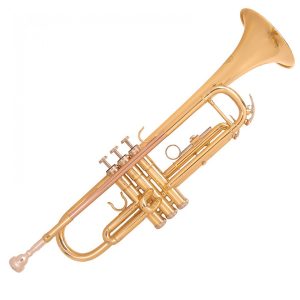
Drum sets
Drum sets are one of the most impressive and dynamic categories of musical instruments. They form the core of rhythmic unity in many genres of music, including rock, jazz, Latin, and many others. A drum set usually consists of five basic parts: the kick drum, the snare drum, 2 toms, and a floor tom. It also includes the “hi-hat” and other cymbals, with stands, pedals, and other accessories.
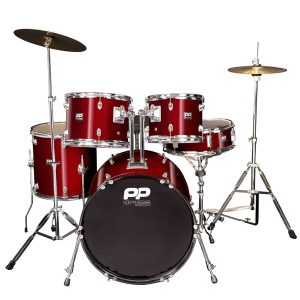
Drum sets require a significant investment for the beginner musician. They usually start from around €300-€400 and may include the necessary drum stands, drumsticks, pedals, and cymbals, but it’s important to check exactly what is included in the package. Additionally, there are practice pads for study purposes and digital drum sets that can be used with headphones, providing additional flexibility in controlling the sound and intensity, making practice more frequent and ideal without disturbing those around us.
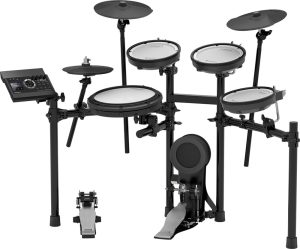
The Cajón
The Cajón, an exceptionally interesting musical instrument, is part of various musical traditions in many parts of the world. The Cajón has its roots in Latin America, particularly in the Andean region. It originated from the culture of indigenous tribes and later evolved with the influence of Spanish culture. From there, it spread worldwide and became beloved in various music genres.
The Cajón is usually constructed from high-quality woods chosen for their unique acoustic properties. Top woods such as mahogany, rosewood, and palisander are often used in its construction. There are different types of Cajón, with the most popular being the acoustic and the Peruvian Cajón. The acoustic one offers a warm and natural aesthetic with a dominant snare sound, while the Peruvian Cajón, without snares, provides conga-like response and sound.
The Cajón is used in various music genres, such as Latin music, flamenco, tango, and even in contemporary global music. It is an instrument distinguished for its expressive capability and the passion it brings to each performance. Ideal for rhythmic accompaniment alongside a guitar or other musical instruments, it can be played with hands or special Cajón brushes. With its sound having won hearts and global recognition, the Cajón continues to be an amazing musical instrument that blends tradition with contemporary sound.
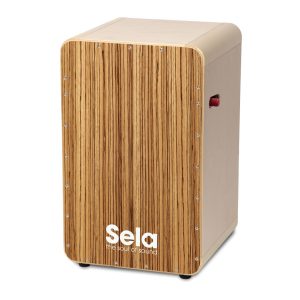
The Tambourine - Darbuka
The tambourine falls into the category of traditional percussion instruments (tambourine, bendir, daires, etc.) and constitutes a significant part of the world’s musical heritage. With roots traced to various parts of the world, the tambourine has evolved into various types, each with its own characteristics.
The classic tambourine, also known as the “Turkish” tambourine, is the most widespread and affordable. Constructed from metal (usually aluminum or brass), it produces a sharp and lively sound, rhythmically accompanying traditional songs. It comes in various designs with different overall heights and rim diameters, while its membrane is typically made of plastic or mylar.
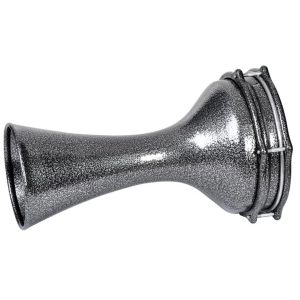
The darbuka originates from the Middle East and is larger in size, which makes its sound more dominant and fuller compared to a classic tambourine. It is usually made of aluminum or special metal alloys in the more expensive categories. Some top manufacturers adorn these instruments with intricate handmade mosaic designs made of mother-of-pearl, making them unique works of art that showcase hand craftsmanship with great skill, bead by bead, by artisans from the East.
The sombati is a subcategory of the darbuka with similar characteristics and unique decorations but larger dimensions and weight, producing an even richer and more intense sound with top quality. Due to its large size, the sombati is usually played in a seated position and is used by professionals in the field who seek an instrument with excellent performance for extended use without fatigue, generating greater intensity than the darbuka.
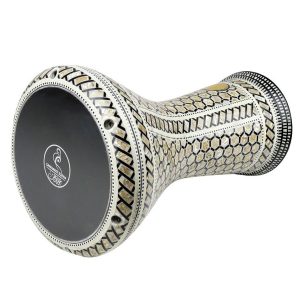
Conclusion
Having explored the most common musical instruments for beginners, now only you can decide which musical instrument is suitable for you! Remember to consider the natural size of the instrument – think about how you will transport it and if it will fit in your available space, consider your neighbors – will they hear you and withstand your daily practice, and take into account your budget, especially if you’re not sure how long you will continue to play. Above all, music is for enjoyment. Engaging with music is a creative pursuit and something that can pull you out of the routine of everyday life, filling you with self-confidence and great pleasure – enjoy it!



